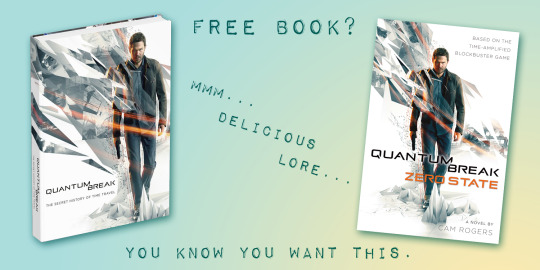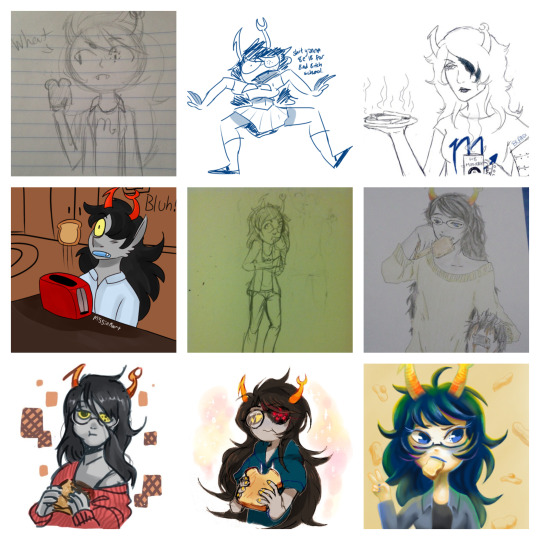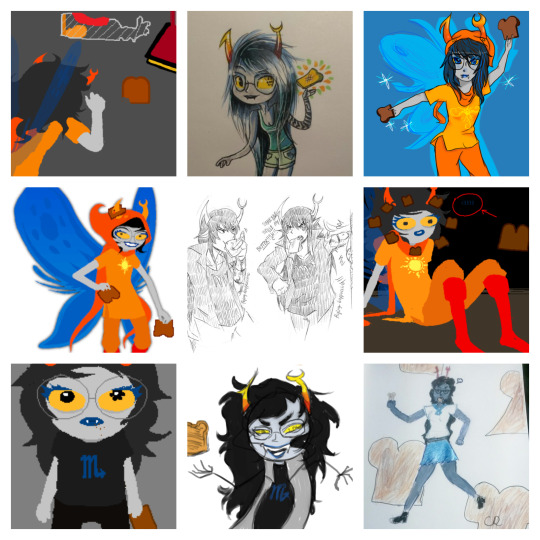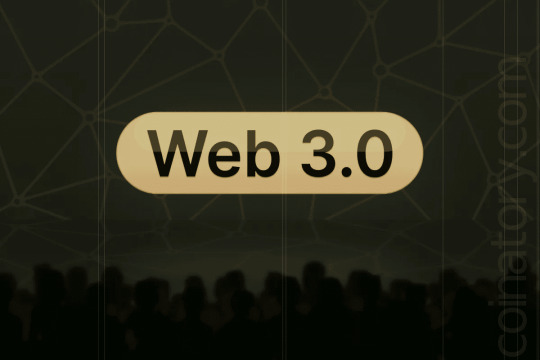#disclosure nft
Text
I don’t care who you are, using your fame/platform to sucker people into crap isn’t cool. Celebrities advertising “slimming” products or other crap like that - spoiler, none of it works, there’s no magic pill or tea for weight loss, that’s not how bodies work, at best you're buying an expensive laxative. Or pushing the fast fashion thing, trying to get you to buy the same outfit in thirty-eight different colours or a different dress for every day, because we aren’t throwing out enough plastic yet. Or now, getting into the NFT game which is a) a glorified, not-yet-illegal pyramid scheme and b) helping to kill our planet that little bit faster.
I don’t care who it is or how much I like their work, I’m not going to buy into this nonsense. If you need to make some extra cash, there are MANY legitimate, positive ways to do that. Do the Cameo thing or sell signed photos or start a Patreon. Hell, straight-up ask people to tip you, they probably would.
But using your platform to try and sucker your fans into buying crap that at best does nothing and at worst is actually bad for their health or y’know, the planet they live on, is not okay in my book and it never will be and that is a hill I’ll be staying on.
#svenja for ts#hi i'm back and i have opinions#SURPRISE#my opinion#rant#oh and full disclosure#this was prompted by colin o'donoghue with his nft venture#but like#it also applies to many others#i don't make exceptions#if it's harmful/scammy and you're pushing it#i'm not ok with it#wasn't a fan of jen pushing the fitness thing to an unhealthy level either for example
14 notes
·
View notes
Text
it's time.
welcome to…
QUANTUM BREAK APPRECIATION MONTH 2024

okay, fuck it, i went too hard last year trying to post every damn day in april. this year, i am taking a break and inviting you all to join me in making too many insane posts for quantum break month.
yes, that means i will be giving out prizes to those brave soldiers who join me in posting about a nearly-dead eight-year-old fandom for an entire month. i cannot promise that they are GOOD prizes, but i WILL reward you for joining me in quantum break hell.
HERE IS MY CALENDAR:

you will notice i am starting on the second week of the month. this is because i have been renovating an office and am exhausted. i will not be taking questions at this time.
anyway, the 5th of april is the 8th anniversary of quantum break's release! if you post about quantum break on this day and send me a link to the post, i will draw you a tiny doodle on a post-it note of one of the quantum break characters.

the week of april 7th - april 13th i have designated as ships week. this week, post about your favorite quantum break ships! for every shippy post you make (and send me a link to), i will put your name into a hat one time and then pick a random person (on the 30th) to recieve a ship certificate from robinboob, a parody website that sells "certficates" saying you "own" a certain ship. (to clarify, this is parodying nfts, but the money actually funds fandom-centric web development projects.)
(i already own certificates for jackpaul and paulcest. see below. but i'm sure you can come up with some fun new ships that i can buy for you ;3)

the week of april 14th - april 20th is blorbo week. who is your quantum break fave? which of these characters do you want to squeeze like a stress toy? post about your fave this week, and for each post you send me, i will put your name into a hat once and randomly pick someone (on the 30th) to receive free art, done by me, of your blorbo.
(i have already drawn so many quantum break fanarts, and yet, there are still characters i have only drawn once or twice. if your fave is underappreciated, this is the week for you.)

the week of april 21st - april 27th is plot week. gimme your meta, your theories, ramble about the plot points you love to hate or hate to love. for every plotty post you make and send to me, i'll enter your name in my little hat of names once and then pick a random person (on the 30th) to win either a copy of the secret history of time travel or quantum break: zero state, your choice.

that's about it! general diclaimers: you can tag your posts with "quantum break appreciation month 2024" obviously (that's what i'll be doing) but the only way to guarantee i see them and count them is to send me a link. my askbox will be open all month for this reason. you're also free to join the quantum break discord server i run and send your posts there, if that's easier! i won't announce winners for anything until the 30th. if i can't get in contact with you to tell you you've won (ie via tumblr message, askbox, discord, etc) i will pick someone else.
also, full disclosure, yes, i am giving out prizes specifically because i am too tired to make a ton of posts myself. but that doesn't mean i won't try! (i'm not going to enter MYSELF into the hat for a prize though, that would be silly.)
anyway. happy quantum break month! go wild my friends!!
31 notes
·
View notes
Note
What do you think of AI stuff like DAll-E or Midjourney?
It's not as useful as some people want you to believe. A lot of people pushing for the acceptance of this kind of software are the same tech bros that invested in crypto currency and were trying to sell you NFTs, which should tell you enough.
All of this "it's democratizing art!" and "finally, people can make art even if they don't have natural talent!" is snake oil.
You know where my "natural talent" came from? I started drawing when I was 4 or 5 years old. I drew at least one thing per day for over 20 years. I earned the ability to crank out dumb doodles on a whim.

You can't just show up one day and think you deserve to make artwork without putting in the work to learn and get good at it. Art's importance comes from the length of time needed to learn to master it. And I don't just mean drawings, I mean music, film, food, everything. No matter what it is, effort is value.
Financial value, sentimental value, it doesn't matter. All value is derived from the effort required to make it.
If you can just push a button and churn out artwork en masse, that devalues the importance of art. I mentioned this back with the Martin Scorsese ask, but it's like, which has more value? An original hand-made piece of artwork, or a print of that artwork? Prints are easy to mass produce. You can get a nice, high quality, glossy print of the Mona Lisa almost for free at this point. But the actual Mona Lisa, the original product, is actually valuable beyond value.
Art prints are literally just replicating a single file over and over and over again, but the original is one-of-a-kind and where all the effort is most evident. All the layers of paint can be felt as DaVinci sought perfection in his work. That's what makes it special. That's what makes it important.
My uncle does woodworking. He's so good at it, he gave my Mom an end table that looks like it came from a high-tier furniture store. A mass-produced end table like that would be at least $100. He made it by hand. It is beautiful. I will treasure that end table forever.
Effort is value.
If you spend any length of time looking at art websites where AI art is allowed (such as deviantart or pixiv), what you'll often find is these AI art chumps submitting massive amounts of artwork. They'll submit 10, 20, 40+ images a day, all from the same prompt, all with slight differences, because to them, every single thing the generator produces is worth submitting.

Even when I was drawing regularly, I could only really do maybe one finished piece per day. Two if you were lucky. Not only because sketching, inking, coloring and shading would take so long, but because after I was done the tank was empty. I'd used up all my effort for the day and had no more creativity left to give.
All the claims of "letting people without artistic talent generate art" are bogus because it throws the whole signal-to-noise ratio out of wack. Too much signal in itself becomes noise. And it devalues the effort that real artwork takes, because real artwork is now part of that noise, instead of rising above it.
When anyone can vomit out hundreds or even thousands of AI generated images that are of decent-to-good quality, a lot of what would be considered "b-tier" artwork ceases to be important anymore.
In a world where AI generated images are normalized, only the top 0.1% of artwork (your Mona Lisas) are considered to have real value. And who benefits the most from that kind of stuff? Rich people. Rich people who can afford to drop a million dollars on a historic piece of hand-crafted artwork. And just to be clear: these are exactly the same people who are trying to sell you on how important AI generator software is going to be going forward.
Or to simplify it even more: the people who stand to profit the most from AI "art" are the ones trying the hardest to sell you on its benefits. Because it benefits them more than it will ever benefit you.
Because, full disclosure, over this last week, a friend of mine has been having a lot of fun with Bing's new image generator feature, and I couldn't help but also play with the toy. The quality of images it can generate is shocking.









Microsoft, in their endless desperation to get anyone to use Bing on purpose, is clearly playing with fire here.
When effort is value and value is effortless, nothing has any value anymore.
I understand how, if you aren't an artist, this is all probably incredibly difficult to comprehend. The lure of fast and easy artwork from a simple line of text is a net gain to you, and nothing else really matters to your perspective. But imagine all of the up-and-coming artists who get completely pushed out of the conversation because of how easy it is to crap out endless AI generator output. I spent 20 years drawing every day for results that can be beaten in 20 seconds.
How many future artists is that going to discourage? There's a lot of buzz, now more than ever, about "late stage capitalism" and the way that's manifesting in our lives. When AI generated images are "good enough", how is that going to change the world around us?
You can't just think, "we'll figure something out" because the people trying to control this narrative do not have your best interests in mind. The people trying to control this narrative think they still don't have enough money yet even though there's not much money left to give them.
Their solution is to stop paying people to do work that they can get a computer to do for free, even if it means destroying the entire foundation of human culture. Long term destruction for short term gain. The same old story.
Are they going to get away with it?
(Another good ask along this line is over here, from February.)
36 notes
·
View notes
Text
Vriska with Toast Mastertoast part 3
part 1, part 2, part 3, part 4, part 5, part 6, part 7

163. @mrcosmo
164. pastelmaryam (deactivated)
165. unknown :(
166. simple-simone (deactivated)
167. @alisonnyash (active, but unable to link)
168. @goatnads-blog
169. @ladyrainmaster
170. extrasuperverys (deactivated)
171. @kawaiisaiyan

172. mageofdoyoumind (deactivated)
173. @ghastly7 (Hi lil' bro!)
174. @sevenseasdawny-blog
175. Deactivated Unknown :(
176. @writersadditction (active, but unable to link)
177. whynotfabulous (it me)
178. candycaptor (deactivated)
179. theshittyartofhomestuckplatypus (deactivated)
180. posteriordarrier (deactivated)

181. kringlefrickler (deactivated)
182. @arrozcontoffee
183. @cantspelladiewithoutdie
184. missinkart (deactivated)
185. kay-kay-okay (deactivated)
186. @chezforshire
187. @pellu0-blog
188. @tlsdlrhdwh (full disclosure, I think this URL is not owned by the original creator anymore?)
189. @vriretta-13

190. makara779 (deactivated)
191. @angelg0th
192. oddreddisk (deactivated)
193. @kou-kou-puffs
194. kittens-of-art
195. @julshii
196. Unknown :(
197. @rainekitty
198. bigdanny-d (deactivated)

199. Unknown :(
200. ferainoob (deactivated)
201. goinggrimdark (deactivated)
202. Same Unknown :(
203. ff123456789
204. Same Unknown :(
205. Same Unknown :(
206. @lady-of-the-virgos
207. kanaya-maryams (deactivated)

208. @purpleumbry
209. @courbet-nft
210. @boobsballoon
211. Unknown Submission :(
212. @les8oo8oo
213. @saintoftoasters
214. thewitchofsweets (deactivated)
215. @mysterydruids
216. @poisoncider

217. averagesizedcthulhu (deactivated)
218. @quiversarrow
219. @spadefish
220. @wembleysfraggle
221. @xomene (active but unable to link)
222. @kodakura
223. lxvxperfectionn (deactivated)
224. meddlingfashionista (inactive)
225. @clophia

226. @eccentricalli
227. @liouxp
228. wayloned-a (deactivated)
229. derejane-kittyjane (deactivated)
230. @napcake
231. @4themindandsoul
232. @messy-lanee-us
233. @casentine
234. @rawmeat3

235. @snail-piss
236. comicalamity (deactivated)
237. derejane-kittyjane (deactivated)
238. fylyne33 (deactivated)
239. Deactivated Unknown
240. @rac000000n
241. @birdlimes
242. @stuckwithtoast (it me)
243. @kanayasittinginplaces

244. @birdlimes
245. @askthesanguineknight-blog-blog
246. @berligelin
247. @flafly
248. @liardy
249. @sidelley
250. teenyfettuccine (deactivated)
251. vriskac (deactivated)
252. @vriska-kisses
to be continued...
part 1, part 2, part 3, part 4, part 5, part 6, part 7
29 notes
·
View notes
Text
Watch "B2B Online Marketing - How Can Your Brand's Authority Boost with Strategic Planning?" on YouTube
youtube
youtube
YouTube ai update all ads space for Google and Microsoft to all ibm clients for ads and marketing fuction and outsource ai to manage for now Jarvis Prime AI to Cortana Prime AI and MULAN PRIME AI update to bio life science for long term training of neural network private connection for purchase order from Imperium Blackstone management system AI and blackstone AI with divisions management system AI. Use staking and NFT for digital footprint and others batch for no disclosure of any.
youtube
Microsoft Korea and Microsoft Ventures and google ventures companies update for platform to platform cloud generation placements and both sides placements ratio and impact results.
Documentary parcel for and get to know the new old me companies.
4 notes
·
View notes
Text
“People saw that little checkbox for sharing data used for machine learning and conflated it with all the current AI image generation drama currently underway,” says Daniel Landerman, a Los Angeles-based creative director and illustrator.
To Landerman’s eyes, the data sharing feature for machine learning has been present in Adobe apps for years—and only applies to files stored in the Adobe cloud, which he says “any professional shouldn’t be doing anyway.” Landerman has long made sure to uncheck any options that share data with app makers, as part of the process of working with clients who often require him to sign non-disclosure agreements to work on projects.
“Everything is moving so fast with all the AI stuff: Artists trying to get regulations to catch up, AI engineers and NFT bros trying to outpace the artists,” Landerman says. “I’m not surprised some other non-issues get caught up in the turmoil.”
Artists accuse Adobe of tracking their design process to power its AI
5 notes
·
View notes
Text

Working on a visualizer for my album. Have a delicious meal.
Technobabble under the cut.
Full disclosure... several of the assets were ai generated, but the composition, filters, and animation is all me. The images were generated using Dall-e. Since the AI filters out gore, I very specifically asked for a heart made of "Muscle tissue and meat". There's a ton of moral dillemas I'm sure people might bring up in the notes, but like... I'm not pushing NFTs or stealing artwork or making any kind of money off of this at all. I'm a digital artist who chose to integrate AI into their art.
Anyways, the gif is composited from these two raw Dall-e images:


The first image gave me a great looking heart, but the trayer had a very weird pattern to it. The tray in the second image looked a lot better, but I don't know why there's a large hole in the heart.
So I photoshopped the two images together and brought them into after effects. I used the puppet pin tool to animate the heart and added a few filters to give it a look more akin to a VHS feed.
#Art#AI assisted art#hearts#meat#cw: gore#after effects#special effects#animation#digital art#photobashing#collage#visualizer#Bleep#Album#Mashup#Music#fuck nfts
7 notes
·
View notes
Photo

NFT marketplace trading is down big as crypto winter rages on
Crypto winter season is continue to raging on in the aftermath of the Terra fiasco and various significant crypto lending firms likely bankrupt.
It turns out cryptocurrency’s blockchain brethren, NFTs, are not executing so hot either.
The extremely unstable speculative investments that tokenize electronic assets on the blockchain are experience the crypto winter season consequences. Investing volume on the biggest NFT market, OpenSea, has dropped a whopping 99 percent in the 4 months amongst May well and August 2022, in accordance to data from the decentralized app retailer DappRadar and noted by Fortune .
SEE ALSO: Ethereum’s The Merge is the most important celebration in crypto this year. Here is why. The plummeting acceptance in the NFT industry is even far more stark when you glimpse at the monetary quantities. OpenSea saw about $2.7 billion in transactions on Could 1. On Aug. 28, the platform saw just around $9.3 million in transactions.
Stars and models, having said that, go on to boost NFT tasks in hopes of lining their digital pockets.
In simple fact, celebrities hawking NFTs without proper disclosure has come to be so rampant that the consumer watchdog nonprofit Reality in Promoting sent warning letters to a amount of famous people, these as Justin Bieber and Reese Witherspoon, concerning their deception.
At the MTV VMAs this past Sunday, on that identical Aug. 28, Eminem and Snoop Dogg took to the stage and, as they carried out, were transformed into 3D styles of their respective Bored Ape Yacht Club NFTs. The Bored Ape element of the performance left a lot of viewers asking… why ?!
Tweet could have been deleted (opens in a new tab)
But, if you are acquainted with both artist, you’d know about their forays into the NFT place above the past number of yrs. Snoop Dogg in distinct has long gone all in on non-fungible tokens, acquiring designed $44 million just earlier this 12 months from selling NFTs of his latest album.
Earlier this yr was a a great deal distinctive time for NFTs though. Now, the value of Bored Ape Yacht Club NFTs, easily the most preferred of the NFT assignments, has plummeted as very well. At its peak on April 30, the flooring value for a Bored Ape NFT was 154 ether, the cryptocurrency traded on the Ethereum network, but as of Sept. 2, the flooring value was all over 75 ether, indicating much more than a 50 p.c fall in price. It must also be observed that the value of ether has dropped as effectively, from about $2,800 in April to $1,500 in September. So the Bored Apes have taken fairly the strike.
And the downturn isn’t only discovered on OpenSea possibly. Other NFT marketplaces are emotion it also. Coinbase, the greatest crypto trade in the U.S., released its possess NFT marketplace in Could. It has unsuccessful to attain any genuine traction, frequently recording just all-around a minimal 5-figures in income for each day. Video clip activity retailer Gamestop also launched its have NFT market in July and has witnessed around the similar action…or deficiency thereof.
Some brand names are studying the home even though. Most notably, the studio at the rear of the massively well-liked online video recreation Minecraft announced it would not get concerned with NFTs.
SEE ALSO: Crypto.com claws back fortune after accidentally minting a millionaire But even now, brand infatuation with NFTs proceeds. Starbucks is looking to start a loyalty application making use of NFTs, luxury makes like Gucci and Tiffany are finding in on the non-fungible token motion, and even M&M’s are releasing a Bored Apes model of its candy.
Cryptocurrency has confronted downturns in advance of and has mounted comebacks. But, the significantly newer NFT phenomenon is struggling with an even bigger challenge: Brand names think in it, but individuals really don’t. That’s a big problem to prevail over.
https://socialwicked.com/nft-marketplace-trading-is-down-big-as-crypto-winter-rages-on/
7 notes
·
View notes
Text
Best NFT Architecture Collections

An NFT is a Digital item that represents both physical and intangible elements, including architectural creations, as the building blocks. Below are a few NFT architectural examples we’ve included in this article.
1. Mars House
The premier example of NFT architecture is Mars House, designed by Toronto-based artist Krista Kim
The sale of this house marked the first virtual home on a non-fungible token market
The May 2020-designed Mars House project was entirely built as a 3D digital file produced in the well-known video game production engine Unreal Engine
Virtual reality viewers can see Mars House, But in the future, with applications like SuperWorld, it might potentially be viewed in an augmented reality (AR) setting
2. CryptoHouses
The CryptoHouses is an effort on the Ethereum blockchain to create and store Nft that represents a simple, modern home-building project
An algorithm is developed to design house iterations for the CryptoHouses
An algorithm based on the parameters is used to generate each and every residence
The needs of the initiative are met by each of the CryptoHouses
They are fashioned by constraints, yet they also stand out because of minute differences
Customers can pick to choose a result from the iterations and, each client can so decide for themselves what the project’s outcome will be
3. Aureal
An innovative creative and architectural project called Aureal aims to produce and distribute digital works of art (NFT)
It includes a parametric architectural proposal, that may be realized in the real world
They support an alternative marketing strategy that emphasizes the design skills of a new generation of professionals, who want to restore the connection between the physical and digital worlds by utilizing cutting-edge BIM technologies and the use of the IFC open format
4. Underwater Sculpture
Visual artists Charlotte Taylor and Nicholas Préaud created an NFT artwork based on an OMA sculpture that will be a feature of an underwater park in Miami Beach
To advertise OMA’s ReefLine sculpture park, which will be built off the coast of Miami Beach, the object was sold as a non-functional toy. The sculpture’s exact replica will be part of the underwater park
It was unveiled as a part of Miami Art Week, which also features events like Design Miami and Art Basel Miami Beach
REFERENCE:
https://illustrarch.com/articles/10746-best-nft-architecture-collections.html
DISCLOSURE:
None of these articles constitutes financial advice. Articles are highly summarised to make it easy for the reader and save time, so please DYOR further before putting your hard-earned money into any product mentioned.
Please note that the tech industry evolves rapidly and the info in this article is correct at the time of publishing. As Heraclitus said, “Change is the only constant,” so if anything sounds old or off, please holler on the socials or comment here so everyone stays peeled.
Affiliate links may be included in these articles, and signups through these links are highly appreciated. These links support better research and quality writing and help you find the right products with less hassle, so it’s a win-win :) Great care is taken to ensure the links are from authentic, non-spammy sources.
Stay up-to-date on the latest stories by signing up for the newsletter. Please don’t mark these emails as spam, instead, you can easily unsubscribe.
2 notes
·
View notes
Text
Key Takeaways
Artists Tyler Hobbs and Dandelion Wist have breathed new life into the NFT market.
Mint passes for their new collection, QQL, dropped in a Dutch auction today that closed at 14 ETH and netted around $16.75 million.
Tyler Hobbs is one of the most notable NFT artists in the space; his Fidenza series remains one of the market's most sought-after collections.
The QQL Dutch auction closed in less than an hour, raising around $16.75 million. QQL Raises $16.75M It turns out NFTs aren’t dead, at least if today’s QQL drop from Tyler Hobbs and Dandelion Wist is anything to go by. Fidenza creator Hobbs and Dandelion Wist released their highly anticipated generative art experiment via an Archipelago Dutch auction earlier this evening, putting 900 mint passes for the 999-piece collection on sale at an initial asking price of 50 ETH. The auction implemented a rebate mechanism, meaning buyers all paid the same price once it settled. The auction closed out at 14 ETH, banking the pair a total of 12,600 ETH worth roughly $16.75 million at press time. QQL’s website describes the collection as a collaborative work “that celebrates emergence, unpredictability, and happenstance over forced rarity.” Unlike most other generative art collections, it invites the owner of the work to become a creator of the project. The QQL website lets anyone create their own outputs using the project’s complex algorithm. Those who minted a pass today can create infinite outputs until they settle on a piece they like, meaning someone could theoretically mint a QQL NFT 100 years from now. QQL also introduces a 2% royalty fee on secondary sales for mint pass owners.
Thanks to Hobbs’ status in the space, the collection’s unique approach to NFT minting, and the striking outputs the algorithm produces, QQL generated huge hype in the lead-up to the auction. After Hobbs and Dandelion Wist opened the QQL website to the public to allow them to create their own outputs, Hobbs revealed that over 1 million pieces were rendered in the first two days. Fidenza’s Legacy The pair also ran a competition to give would-be collectors a chance to win their own mint pass, asking entrants to tweet a photo of their best render. Rising generative art star Emily Xie, NFT whale DCinvestor, and ARTXCODE founder Sofia Garcia were invited to pick out nine winners from the 11,000 entries.
For the QQL Contest, @iamDCinvestor selects: @ArtofConviction https://t.co/7MEOfWHS5I pic.twitter.com/KBkpJqzTYW
— Tyler Hobbs (@tylerxhobbs) September 27, 2022Mint pass holders can create their own NFT using the algorithm from September 30. Due to the unique approach to the drop, it’s unclear whether the mint passes or the outputs themselves will command a higher value. Since the auction closed, the collection’s passes have hit a floor price of 17 ETH on OpenSea. Hobbs became one of the NFT space’s biggest stars during a boom in the market in 2021 when he released Fidenza on Art Blocks. Fidenza NFTs minted at around $400 and topped a floor price of $500,000 weeks later. Though the floor price has since fallen to 96 ETH, worth around $128,000 amid a slump in the NFT and crypto market, Fidenza is still one of the world’s most sought-after generative art collections. Dandelion Wist entered the NFT space as generative art collections like Fidenza exploded in popularity; they’re renowned for their collection of canonical works that dropped during the 2021 frenzy. While it’s not clear if QQL will be quite as popular as Fidenza, with today’s drop raising millions in the depths of a bear market, it’s probably fair to say that at least a few hundred generative art collectors are big fans of the work. Disclosure: At the time of writing, the author of this piece owned a QQL mint pass, ETH, and several other fungible and non-fungible cryptocurrencies.
The information on or accessed through this website is obtained from independent sources we believe to be accurate and reliable, but Decentral Media, Inc.
makes no representation or warranty as to the timeliness, completeness, or accuracy of any information on or accessed through this website. Decentral Media, Inc. is not an investment advisor. We do not give personalized investment advice or other financial advice. The information on this website is subject to change without notice. Some or all of the information on this website may become outdated, or it may be or become incomplete or inaccurate. We may, but are not obligated to, update any outdated, incomplete, or inaccurate information.
You should never make an investment decision on an ICO, IEO, or other investment based on the information on this website, and you should never interpret or otherwise rely on any of the information on this website as investment advice. We strongly recommend that you consult a licensed investment advisor or other qualified financial professional if you are seeking investment advice on an ICO, IEO, or other investment. We do not accept compensation in any form for analyzing or reporting on any ICO, IEO, cryptocurrency, currency, tokenized sales, securities, or commodities.
See full terms and conditions.
3AC Is Broke. What’s Next for Its Multi-Million Dollar NFT Colle...
Crypto Briefing explores whether Starry Night Capital will be forced to liquidate its prestigious NFT collection and the impact that such an event could have on the NFT space. 3AC...
Fidenza Artist Sells $7M in NFTs That Aren’t Yet Minted
News
Oct. 23, 2021
Fidenza artist Tyler Hobbs has sold $7M worth of digital art that is not scheduled to exist until December. Even then, buyers will have to be physically present to redeem...
Generative Art NFTs Are Booming Despite the Crypto Slump
The market prices for many sought-after generative art NFTs have jumped in recent weeks. Generative Art NFTs Rally Despite falling crypto prices and weak sentiment across the entire space, one...
Read More
1 note
·
View note
Text
User Empowerment: UI/UX Strategies for Enhanced Experiences
Introduction
In today’s digital landscape, user empowerment has become a central focus in the realm of UI/UX design. Empowering users means giving them control and autonomy over their experiences, ultimately leading to more satisfying interactions with digital products and services.
Understanding User Empowerment
User empowerment refers to the ability of users to make informed decisions, take meaningful actions, and exert control over their interactions with technology. It involves providing users with the tools, information, and support they need to navigate digital interfaces effectively.
Importance of User Empowerment in UI/UX
User empowerment is crucial in UI/UX design as it enhances user satisfaction, engagement, and loyalty. Empowered users are more likely to have positive experiences and develop a sense of trust and loyalty towards the brand or product.
Key Strategies for User Empowerment
Clear Communication
Effective communication is key to empowering users. Designers should use clear and concise language, provide informative feedback, and guide users through the interface in a way that is easy to understand.
Personalization
Personalized experiences empower users by tailoring the interface to their specific needs and preferences. This can include personalized recommendations, customized settings, and adaptive interfaces that adjust based on user behavior.
Feedback and Input
Giving users the opportunity to provide feedback and input helps them feel heard and valued. This can be done through surveys, ratings, reviews, and interactive elements that allow users to contribute to the design process.
Accessibility
Ensuring that digital products are accessible to all users, including those with disabilities, is essential for user empowerment. Designing for accessibility involves following standards and guidelines to make interfaces usable for everyone.
Examples of Successful User Empowerment
Companies like Apple, Google, and Amazon have successfully empowered users through intuitive interfaces, personalized experiences, and proactive support. For example, Apple’s Siri provides personalized assistance, while Google’s search engine anticipates user needs.
Challenges and Solutions
One of the main challenges in user empowerment is balancing user control with simplicity and ease of use. Designers must find a balance that allows users to feel empowered without overwhelming them with choices. Solutions include clear information architecture, progressive disclosure, and user-friendly interfaces.
The Future of User Empowerment in UI/UX
As technology continues to evolve, user empowerment will become even more important. Future trends may include more immersive and interactive interfaces, greater personalization through AI and machine learning, and enhanced accessibility features for diverse user groups.
Conclusion
User empowerment is a fundamental principle in UI/UX design that enhances user satisfaction, engagement, and loyalty. By implementing key strategies such as clear communication, personalization, feedback, and accessibility, designers can create more meaningful and empowering experiences for users.
Visit my Upwork profile for — UI/UX design, Web Design, Mobile design & Web app designer
Check out my amazing project catalog — iOS or Android Mobile APP UX/UI Design, Responsive website design & Crypto & NFT Mobile App UI Design
0 notes
Text
i completely understand (and encourage) hesitancy and distrust of image generation ML (AI) and seeking more regulation and talking abt its use to further deny artists the ability to get by on their work, and i dont think you should like it, but... im very worried when ppl say they consider it "stealing". it detects patterns in data (the data being the pixels in the pictures and the words in their metadata such as the titles), and determines "this pattern is more likely to happen under these conditions, and this other one if more likely to happen under these other conditions..." etcetera, lots and lots and lots of times. and then when it generates an image, it follows the likelihoods it counted out earlier. how does that constitute stealing? if "using a certain color/shape/composition/whatever element with the same likelihood that several artists do" is stealing (or, worse, plagiarism, which has a VERY specific definition that isn't this), then.. what isn't? how do you feel about artists who learn by copying eye shapes? artists who follow coloring tutorials by others? the people trying to reconstruct Johannes Vermeer's artistic process even though he kept it secret out of fear of stolen valor? artists drawing based off things theyve seen before but never asked permission to use in the future? artists who post studies of photos someone else took?
remember, it doesnt work anything like a "collage", and if an image generator IS recreating exact pieces of the images in its dataset, that means its not working as intended and has overtrained on a small dataset, which is considered a bad thing. the only thing an image generator (is supposed to) use from its training images is an analysis of how often certain patterns appeared.
i don't think there aren't issues of respect/credit in using something as part of training data, but i dont think using a generator as described above constitutes "stealing" the art used in the dataset. if it does, then i think the other things i've listed in the first paragraph must also count as stealing, right? and that feels like a very hostile and capitalist mindset to have. i think there are problems you can have with image generation that don't require saying you can steal a probability.
please don't encourage stricter copyright, it has historically only been in the benefit of corporations to take rights away from independent artists, which is exactly what we DISLIKE about the ai situation. there is a reason we like open source software and transformative rights and games piracy and copyleft ideals. instead, please encourage protections for artists, like regulations ensuring artists get livable wages regardless of if anyone wants their art. and regulations requiring disclosure that something is machine generated. and regulations restricting how much energy can be used by non-essential processes/industries. not stronger laws about idea-property, ok?
in other words, attempting to turn matters of respect (such as how you're an asshole if you post someone's art without asking but if you copy-paste someone's nft you're based. it's the same action, and it shows disrespect both ways, but the latter is someone it's fine to not respect) into law is very difficult, and if it is codified, it is pretty much always strengthened and used by large companies exploiting people for profit, because they have lawyers and publicity teams, and never used for the benefit of individuals, who get ignored or paid off.
0 notes
Text
Navigating Cryptocurrency Regulations: Lessons from CYN Token
Navigating Cryptocurrency Regulations: Lessons from CYN Token

Introduction
Navigating Cryptocurrency Regulations is a critical aspect for the success of any digital asset in today's market. These regulations are designed to provide a framework that ensures security, compliance, and stability within the crypto ecosystem, benefiting both projects and investors. For crypto ventures like CYN Token, understanding and abiding by these regulations is not just about legal compliance; it's about building trust and fostering growth in an industry that's constantly evolving.
In this article, we dissect strategies for navigating cryptocurrency regulations, drawing from the experiences of CYN Token. This prominent cryptocurrency project has encountered various regulatory challenges which they've managed to turn into learning opportunities. By delving into CYN Token's journey, you can glean insights into how to approach regulatory hurdles proactively and effectively.
Understanding Cryptocurrency Regulations
Cryptocurrencies present a unique set of challenges for regulators around the globe. The very attributes that make digital currencies attractive to users – decentralization, anonymity, and borderless transactions – also create significant hurdles for regulatory bodies attempting to oversee their use and exchange. Here are some of the primary complexities:
1. Cross-Border Transactions
Cryptocurrencies can be traded across international borders with ease, which poses a challenge for enforcing national regulations. Jurisdictional boundaries become blurred as assets move seamlessly between countries, often without the oversight of central financial institutions.
2. Anonymity
One of the defining characteristics of many cryptocurrencies is the ability to hold and transact them anonymously. This feature makes it difficult for regulators to track the flow of funds and enforce know-your-customer (KYC) and anti-money laundering (AML) regulations.
3. Rapid Technological Advancements
The pace at which cryptocurrency technology evolves frequently outstrips the speed at which regulatory frameworks can adapt. Innovations such as decentralized finance (DeFi) platforms, non-fungible tokens (NFTs), and blockchain forks create novel situations that existing laws may not adequately address.
The task at hand for regulatory bodies is not just to manage these challenges but to do so in a way that doesn't stifle innovation or discourage participation in the crypto economy. A nuanced approach is required, one that provides clear guidelines for compliance while respecting the principles that underpin digital currencies.
Regulatory Framework
A robust regulatory framework plays a pivotal role in legitimizing cryptocurrency markets and establishing trust among investors. Without clear rules, market participants face uncertainty, which can lead to lower investment and innovation within the sector.
Securities Laws
Securities laws are particularly relevant when discussing cryptocurrency regulations. Determining whether a particular token is considered a security has significant implications for both issuers and investors:
The Howey Test: In the United States, the Howey Test is commonly used as a benchmark to determine whether an asset qualifies as an investment contract or security. Under this test, an asset is deemed a security if there is an investment of money in a common enterprise with a reasonable expectation of profits derived from the efforts of others.
Consequences for Crypto Projects: If a token fits the definition of a security according to relevant laws, it must comply with registration requirements set forth by regulatory agencies such as the U.S. Securities and Exchange Commission (SEC). This process includes disclosure obligations that can be onerous for project founders.
Impact on Secondary Trading: Tokens classified as securities face restrictions on how they can be traded after issuance. These restrictions often include limitations on trading platforms and investor qualifications, potentially reducing liquidity and accessibility for certain tokens.
By understanding these challenges associated with regulating cryptocurrencies, projects like CYN Token can better navigate the complex regulatory landscape. Such knowledge equips teams to develop compliant strategies from the outset rather than retrofitting solutions in response to unforeseen legal pressures.
The Role of Regulatory Frameworks in Fostering Innovation and Investor Confidence
Cryptocurrency regulations often struggle with the decentralized nature of blockchain technology, presenting a unique challenge to regulators who want to maintain market integrity. The main purpose of a regulatory framework is to make the complex legal landscape easier to understand, providing clarity and protection for those involved in the market. These frameworks are crucial, acting as guides for both innovators and investors in the constantly changing cryptocurrency world.
Governments around the world take different approaches to regulating cryptocurrencies:
Stringent Enforcement: Some countries impose strict regulations to control potential risks associated with crypto activities, often limiting innovation.
Innovation-Friendly Policies: Others find a middle ground by creating policies that promote technological advancements while also protecting investor interests.
Securities laws are particularly important in this regulatory puzzle. Crypto projects need to navigate these laws carefully because many tokens are considered securities, which means they have additional compliance requirements.
Examples of regulatory frameworks improving market dynamics include:
Singapore's Payment Services Act: This act gives cryptocurrencies a clear legal status and encourages blockchain innovation, while also implementing measures against money laundering and terrorism financing.
Estonia's Licensing Regime: Known for its progressive stance, Estonia has established a simple licensing process for crypto businesses that improves transparency and security for users.
By setting clear rules for everyone involved, these frameworks offer two main benefits:
Encouraging Innovation: Entrepreneurs feel more confident exploring new ideas when they know the law is on their side.
Protecting Investors: Investors are more likely to get involved in a market where their rights are clearly defined and there are safeguards in place.
Finding the right balance between promoting innovation and ensuring investor protection requires careful planning when it comes to cryptocurrency regulations. Countries that have successfully implemented such frameworks see increased innovation activity and strong investor confidence.
Navigating Securities Laws in the Cryptocurrency Space
Cryptocurrency regulations and securities laws are important rules that control the growing digital asset market. However, it can be difficult for regulators to apply traditional financial oversight methods to the decentralized blockchain technology.
A regulatory framework helps establish clear rules for everyone involved in the market, providing guidance and protection. Different governments have their own approaches to cryptocurrency regulations. Some have strict rules, while others encourage innovation.
Why Securities Laws Matter for Crypto Projects
Securities laws are especially important for crypto projects because tokens may be considered as securities, which come with additional regulations. Here's what you should know:
Token Classification: The key question is whether a token is a security or a utility. The Howey Test, created by the U.S. Supreme Court, is often used to determine this. It states that an instrument is a security if there is an investment of money in a common enterprise with a reasonable expectation of profits derived from the efforts of others.
Regulatory Standards: Having consistent rules is crucial in defining token classifications. Clear guidelines not only help crypto projects comply with the law but also ensure fairness and trust in the market.
Implications for Crypto Projects: If a token is classified as a security, it must be registered with relevant authorities like the U.S. Securities and Exchange Commission (SEC). Additionally, securities may have restrictions on trading, which can affect how easily they can be bought or sold.
The Challenge for Crypto Projects
Understanding these elements is crucial for any crypto project that wants to succeed in this complex industry. As we've seen with CYN Token and other similar projects, finding the right balance between innovation and following securities laws is an ongoing challenge that requires careful planning and expert advice.
Lessons from CYN Token's Journey
The Regulatory Challenges Faced by CYN Token
CYN Token, in its development phase, encountered several regulatory challenges that reflect the broader complexities of cryptocurrency regulation. Key hurdles included:
Uncertainty in Token Classification: Determining whether CYN Token was a utility or security token was a significant challenge due to the ambiguous criteria that govern token classifications. This uncertainty stems from the Howey Test, which assesses the nature of a token based on the expectation of profits derived from the efforts of others. Given that CYN Token provides access to Cast Your Nets' Alternative Retirement Program (ARP), Harvest Membership, and other services, classification became a pivotal concern.
Securities Law Compliance: The Securities and Exchange Commission (SEC) has been vigilant in scrutinizing crypto projects for compliance with securities laws. CYN Token had to meticulously navigate these regulations to avoid potential conflicts. For instance, if CYN Token were classified as a security, it would have triggered registration requirements and restrictions on secondary trading, potentially limiting its accessibility and functionality for users.
Cross-Border Regulatory Variations: As cryptocurrencies operate on a global scale, CYN Token faced the complexity of complying with diverse legal frameworks across different jurisdictions. While some countries may have clear guidelines and welcoming policies for cryptocurrencies, others could impose stringent regulations that stifle innovation.
Rapid Technological Advancements: Keeping pace with the fast-evolving technology behind cryptocurrencies is another challenge for regulatory compliance. As CYN Token integrated new features such as staking and bridge loans, it had to ensure that these innovations aligned with existing and emerging regulations.
Investor Protection Concerns: Balancing the need for innovation with investor protection is a tightrope walk for many crypto projects. For CYN Token, this meant implementing robust Know Your Customer (KYC) and Anti-Money Laundering (AML) controls to foster trust among users and regulators alike.
By examining CYN Token's approach to these challenges, you can gain insights into effective strategies for navigating the complex landscape of cryptocurrency regulation. These include proactive compliance measures, continuous engagement with regulatory bodies, and adapting to legal requirements without compromising on the project's vision and user benefits.
Building a Culture of Compliance: CYN Token's Approach
CYN Token, despite its innovative blockchain solution and early market success, recognized the importance of stringent compliance measures in the complex landscape of cryptocurrency regulation. To navigate the regulatory hurdles effectively, CYN Token implemented several proactive steps:
Know Your Customer (KYC) Procedures: CYN Token established a comprehensive KYC framework to verify the identity of its users. This involved collecting necessary personal information to ensure legitimacy and prevent identity theft, fraud, and other illegal activities.
Anti-Money Laundering (AML) Controls: With AML policies in place, CYN Token took measures to monitor and report suspicious activity. Their system is designed to flag transactions that could potentially be associated with money laundering or terrorist financing.
Continuous Regulatory Monitoring: Staying updated with the latest SEC guidelines and global financial regulations was key for CYN Token. They set up a dedicated team to continuously monitor legal changes and adapt their compliance strategies accordingly.
Education and Training: CYN Token invested in educating their workforce about compliance. Regular training sessions ensured that all employees were aware of their role in maintaining regulatory adherence.
By prioritizing these initiatives, CYN Token aimed to build a strong foundation of trust with regulators, investors, and customers alike. This approach not only minimized legal risks but also enhanced their reputation as a responsible participant in the crypto economy.
Engaging with Regulators: Lessons in Effective Communication
CYN Token stands as a testament to the positive outcomes of regulatory engagement in the cryptocurrency landscape. With its innovative blockchain solutions, CYN Token quickly garnered attention in the market. The project's commitment to compliance, particularly through constructive dialogue with regulatory bodies, has been central to its early success.
1. Constructive Dialogue with Regulators
By engaging in open communication with regulators, CYN Token effectively navigated potential regulatory hurdles. This approach not only facilitated a clearer understanding of compliance requirements but also helped build trust and credibility within the industry.
2. Benefits of Regulatory Engagement
Enhanced Understanding: Continuous interaction with regulatory authorities provided CYN Token with deeper insights into legal expectations and emerging regulatory trends.
Risk Mitigation: By proactively discussing their business model and token utility, CYN Token mitigated the risk of inadvertent non-compliance.
Advocacy for Innovation: Establishing relationships with regulators allowed CYN Token to advocate for a regulatory environment that supports innovation while ensuring investor protection.
The emphasis CYN Token placed on regulatory engagement reflects a strategic foresight that is critical for any crypto project looking to secure a stable and compliant future in an ever-evolving space.
For entities like CYN Token, maintaining an open channel with industry stakeholders such as the SEC has proven indispensable. It's not solely about adhering to present requirements but also about shaping the conversation around future regulations that could impact their operations and the broader cryptocurrency ecosystem.
The Role of Legal Counsel in Navigating Cryptocurrency Regulations
In the fast-changing world of cryptocurrency, legal counsel plays a crucial role in guiding businesses. CYN Token, with its groundbreaking blockchain solution and early market progress, highlights the importance of expert legal advice. The journey of this project shows how skilled lawyers can help crypto ventures comply with regulations while still encouraging innovation.
Why Legal Counsel Matters
Here are some key reasons why having legal counsel is essential for cryptocurrency projects:
Expertise in Regulatory Compliance: Lawyers who understand cryptocurrency laws can provide valuable insights into complex legal issues. They have knowledge in areas such as securities law, international regulations, and intellectual property rights.
Strategic Planning: Attorneys can identify potential regulatory obstacles early on and ensure that projects like CYN Token follow current laws. They also anticipate future changes to avoid legal problems down the line.
Liaison with Regulators: Effective legal advisors act as intermediaries between crypto projects and regulatory bodies like the SEC. They facilitate open communication, advocate for the project's interests, and negotiate terms that support growth while still complying with rules.
Comprehensive Risk Management: Legal counsel is responsible for reducing risks related to non-compliance. They do this by creating strong legal frameworks and taking proactive steps to prevent any legal issues.
Why CYN Token Relies on Legal Advice
CYN Token's decision to seek qualified legal advice demonstrates a proactive approach to compliance. This partnership ensures that innovative projects can succeed within the boundaries of the law, setting a solid foundation for long-term growth in the market.
It is recommended that companies looking to replicate CYN Token's success also work with experienced legal counsel to navigate these challenges effectively.
Staying Ahead of the Regulatory Curve
Regulatory uncertainty remains a significant hurdle within the cryptocurrency industry, often leaving innovators and investors in a state of limbo. This climate of unpredictability can stifle the growth and adoption of emerging technologies, as startups and established entities alike struggle to align their projects with evolving regulations.
Challenges Faced by Cryptocurrency Projects
1. Evolving Landscape
Cryptocurrency projects contend with an evolving landscape, where rules and interpretations can shift rapidly, impacting strategic planning and operations.
2. Influence on Investment Decisions
Investment decisions are influenced by regulatory clarity, with potential financiers seeking assurance that their capital won't be jeopardized by future legal challenges.
Vigilance from Regulatory Bodies
The U.S. Securities and Exchange Commission (SEC) has been particularly vigilant in monitoring the sector, initiating enforcement actions against projects that step outside of compliance boundaries. These interventions highlight the importance of adherence to regulatory standards:
Recent SEC actions underscore the need for crypto ventures to exercise due diligence in understanding applicable laws.
Enforcement serves as a reminder that non-compliance can result in significant penalties and disruptions to business activities.
Proactive Measures by Companies
In navigating this complex environment, entities like CYN Token have had to be proactive, constantly assessing the regulatory framework and adjusting their operations accordingly. By being attuned to these shifts, companies can maintain a forward-thinking approach, ensuring their practices remain within legal parameters while continuing to innovate.
Conclusion
Navigating Cryptocurrency Regulations is a pivotal aspect of the digital asset ecosystem, with the journey of CYN Token providing practical insights. Crypto projects must prioritize regulatory compliance to secure their long-term viability and foster trust among investors. The experiences of CYN Token demonstrate that:
Understanding and adherence to regulations are non-negotiable for crypto projects.
Staying informed on regulatory changes within one's jurisdiction is essential.
Compliance fosters innovation and ensures the sustainability of crypto initiatives.
Engage with CYN Token's proactive measures in building a compliant ecosystem by visiting https://cyntoken.com. Witness firsthand how they implement best practices in compliance and innovation. Remember, informed participation and continuous learning are key to adapting to the evolving landscape of cryptocurrency regulations.
0 notes
Text
Web3 Gaming Scam Exposed: Developer Unmasks Sophisticated MythIsland Download Scheme

A recent disclosure by a software engineer unveiled an elaborate scam involving game downloads, particularly targeting web3 gaming platforms. This scheme was initiated through a message from a now-inactive Twitter account, @ameliachicel, offering a job. The role was for a Solidity developer for a web3 game named MythIsland, with its details on a professional-looking website, mythisland[.]io. The site featured striking visuals and active links, presenting an in-depth overview of the game, encompassing its digital economy and NFT components. The project team, appearing fully disclosed, added a sense of trustworthiness. This incident gained prominence when 0xMario, an independent developer and victim of the scam, shared it online, leading to a surge in similar scam reports. Subsequent discussions about the game and the job offer
Read more on Web3 Gaming Scam Exposed: Developer Unmasks Sophisticated MythIsland Download Scheme
1 note
·
View note
Text
SEC Warns Investors of FOMO Crypto Investing Ahead of Bitcoin ETF Approval

The United States Securities and Exchange Commission (SEC) has reissued a warning about the risks of FOMO (fear of missing out) crypto investing. This comes just days before the anticipated approval of spot Bitcoin exchange-traded funds (ETFs). The SEC's Office of Investor Education highlighted the risks associated with digital assets such as cryptocurrencies, meme stocks, and nonfungible tokens (NFTs). Celebrities and athletes promoting crypto assets were specifically mentioned, with investors cautioned not to base their financial decisions solely on these endorsements. The warning also emphasized the potential volatility of assets influenced by trends and influencers, stressing that quick losses can occur as the market moves on.
The SEC has previously taken action against celebrities for promoting certain cryptocurrencies without proper disclosure. For example, Kim Kardashian agreed to pay a $1.26 million settlement to the SEC after being charged with failing to disclose that she was paid to promote a sham token called Ethereum Max (EMAX). The regulator's warning serves as a reminder to investors to exercise caution and conduct thorough research before making investment decisions in the crypto space.
Meanwhile, the crypto industry is eagerly waiting for the SEC's decision on spot Bitcoin ETFs. Speculation has arisen that the reissuing of the FOMO warning may indicate an imminent approval of one or more ETFs. Analysts predict that most applicants who met the regulator's requirements before December 29 will likely be approved within the week. The approval of spot Bitcoin ETFs is expected to have a significant impact on the crypto market, providing a regulated and accessible way for investors to gain exposure to Bitcoin.
Read the original article #FOMO #crypto #bitcoin #investing
0 notes